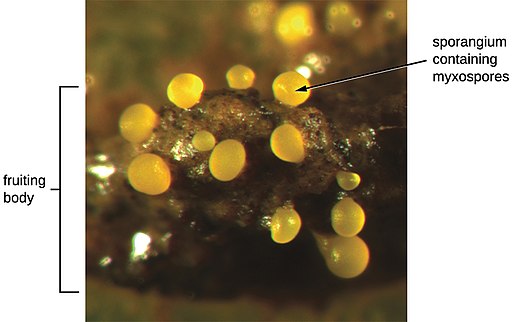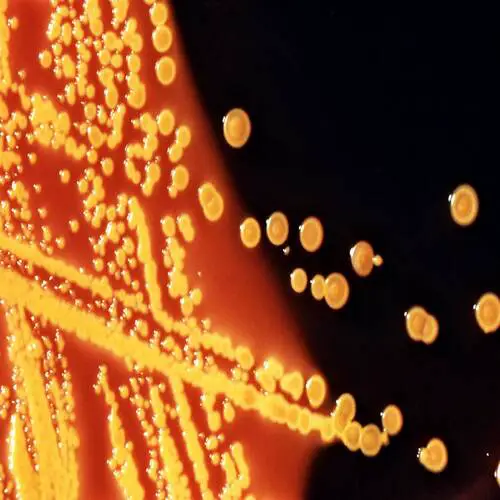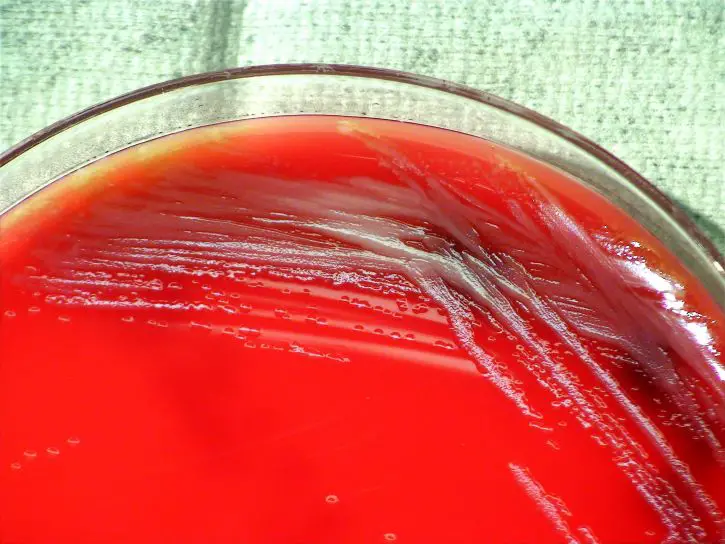What are Endospores?
Overview
Endospores have been described as simplified bacterial forms with DNA genome, reduced cytoplasm, and a tough coating that is resistant to a variety of factors in the environment. Essentially, they are tough, non-productive, and dormant forms formed by some bacteria in response to various environmental stressors that would otherwise kill the bacterium.
As compared to the vegetative forms, endospores can withstand such conditions as high temperatures, radiation, desiccation, and nutrient depletion among others. They are also different from spores produced by organisms like fungi in that they are not reproductive structures but rather dormant cells. Endospores are largely exclusive to low G+C Gram-positive bacteria (in the Phylum Firmicutes).
Some of these include:
· Bacillus
· Sporolactobacillus
· Sporosarcina
· Thermoactinomyces
* Although endospores are different from spores produced by fungi and other organisms, the two terms (spore and endospores) will be used interchangeably when discussing endospore development and structure.
Firmicutes
Thus far, endospores have only been found in Firmicutes. Formerly known as Bacillota, most members of the Phylum Firmicutes are Gram-positive bacteria. As such, they have a thick peptidoglycan cell wall which also consists of muramic acid (they do not have an outer membrane). As mentioned, Firmicutes are characterized by low G+C content (about 40 percent average). For this reason, they are sometimes referred to as the "Low G+C Gram-positive bacteria" or simply as "Low G+C".
They can be found in both terrestrial and aquatic habitats where they exist as aerobes or anaerobes. However, some of the species can be found in the human gut. Though the majority of species in this group are Gram-positive, it's worth noting that some are not and others do not even have a cell wall. Moreover, not all species are capable of forming endospores.
The ability to form spores among some members is largely dependent on signature sporulation genes that can only be found among the aforementioned genera. In the case of Bacillus subtilis, for instance, studies have shown that the formation of endospores is regulated by master regulator Spo0A.
Following phosphorylation, Spo0A serves to directly regulate the expression of 121 (and 500 genes indirectly) involved in the process. Cells start undergoing morphological changes (during sporulation) when Phosphorylated Spo0A reaches a threshold.
Endospore-forming bacteria
Generally, endospore-forming bacteria can be divided into two main categories namely, aerobic endospore-forming bacteria and anaerobic endospore-forming bacteria. Members of the Genus Bacillus are the most common aerobic endospore-forming bacteria.
As the name suggests, these species form endospores in the presence in the presence of oxygen, a defining characteristic of aerobic endospore-forming bacteria. Here, however, it's worth noting that some of the members of the genus exist as facultative or strict anaerobes and are incapable of forming endospores.
The majority of aerobic endospore-forming species exist in the natural environment as saprophytes (depend on dead and decaying organic matter for energy). They can be found in a number of habitats including alkaline, neutral and acidic soils, cold and hot niches, desert, and fresh or marine waters. In most cases, sporulation is induced by nutritional deprivation and population density.
Some examples of aerobic endospore-formers are:
· Bacillus cereus
· Bacillus subtilis
· Bacillus thuringiensis
· Bacillus fumarioli
Some members of the Genus Clostridium (Particularly Clostridium botulinum and Clostridium perfrigens) are some of the most common anaerobic endospore-forming bacteria. Like the Genus Bacillus, the Genus Clostridium also consists of Gram-positive bacteria.
The genus consists of several members that are capable of causing disease in human beings. Clostridium perfringens is one of the major causes of foodborne illness. The majority of Clostridium species are obligate and cannot grow in the presence of oxygen.
A few species, however, are aerotolerant. Differentiation into metabolically inert endospores among some species is influenced by unfavorable conditions like depleting nutrients as well as factors like low pH due to the accumulation of organic acids (e.g. butyrate and acetate). Exposure to oxygen can also induce sporulation, particularly among obligate anaerobes. For the most part, however, nutrient deprivation is the primary cause of sporulation.
Endospore Formation (Endospore Sporulation)
As mentioned, nutrient depletion or deprivation is one of the main factors that trigger sporulation. Under normal circumstances (favorable conditions), a vegetative cell (vegetative bacterial cells) can divide, metabolize various materials, and form ATP, etc. When they detect nutrient depletion, they start to undergo morphological changes that result in the formation of spores.
Therefore, in cases where nutrients are the primary factor, endospores are likely to start forming at the end of the exponential phase of growth. The process of endospore formation/development is divided into seven (7) main stages. These stages are used to denote various morphological/structural, metabolical, and physiological changes in a cell.
The stage 1 of endosome development is characterized by the fusion/joining of two chromosomes resulting in the formation of a single body known as axial filament. The axial filament traverses the entire length of the cell (nearly the entire length in most cases) and lies centrally in the cytoplasm. This change in nuclear material occurs independently of NDA and protein synthesis.
This change also signals the start of endospore development and the spore-forming cell is now referred to as the mother cell. In stage 2 of endospore development, a septum is formed within the cell to produce a prospore. Here, the septum is formed transversely across the cell and near one end of the cell. Before the septum is completed, part of the DNA is also included in the smaller protoplast.
During this stage of development, microscopic studies have also identified an association between mesosomes (organelle formed by invagination of the plasma membrane) and the developing septum.
In the stage 3 of development, the prespore is engulfed/encapsulated by the protoplast forming the forespore. During this period, a plasma membrane of the mother cell has been shown to grow in the periplasmic space so that the forespore is enclosed within a double-membrane structure.
Before the process enters stage 4, additional materials are added between the two membranes to increase the layers. Stage 4 is characterized by the development of a peptidoglycan layer on the surface of the inner membrane to form a germ cell wall. Cortex is also formed outside the membrane.
Whereas the peptidoglycan layer of the cortex is synthesized in association with the membranes of the forespore, the dipicolinic acid (DPA) component is produced by the mother cell before being transported between the two membranes.
During stage 5 of endospore development, a coat is formed around the forespore as the outer membrane disappears. The forespore matures in stage 6 before being released from the mother cell in stage 7 (the endospore is released through lysis of the mother cell).
* In vegetative cells, under normal and favorable environmental conditions, sporulation genes are usually blocked.
Some biochemical changes that occur during sporulation include:
An increase in enzymatic activities - In the early stages of sporulation, there are increased activities of tricarboxylic acid enzymes (e.g. aconitase, fumarase, and succinate dehydrogenase).
Synthesis of various molecules - Some of the molecules produced include those with antibiotic characteristics. These molecules are suggested to play a role in inhibiting growth factors (e.g. RNA polymerase).
Development of spore-specific components - Some of the components produced later on in endospore development include spore antigens, a protein coat, DPA, and peptidoglycans.
Endospore Structure
All endospores are enclosed within a multilayered envelope that is generally referred to as a spore coat. The number of layers in the envelope has been shown to vary between different species (However, it is always multilayered).
The outermost layer/coat is known as the exosporium. Depending on the species, this coat might either be tightly formed or generally loose. It might also contain patterned ridges that are characteristic of many spores. This coat is mostly composed of lipids and proteins (the protein might consist of cysteine-methionine). The protein has been shown to be resistant to proteases which contribute to the spores' survival.
As compared to the outer coat, the inner coat is more complex in general composition. Some of the main components of the coat include lipid, protein (with sulfur content), and glycopeptide. Aside from the sulfur content, the proteins of the inner coats have also been shown to contain a number of specific molecules that are absent in vegetative cells.
* The proteins located in the spore coat make up about 80 percent of the total proteins of the spore. On the other hand, the spore coats have been shown to make up between 30 and 60 percent of the spore dry weight.
The location between the germ cell wall and the outer membrane (the membrane beneath the coats) is known as the cortex. A number of components have been isolated from the region including calcium ions, dipicolic acid, and peptidoglycan. In Bacillus species without dipicolinic acid, studies have reported that they are incapable of forming spores. This component is therefore an important element in the formation of this structure.
The core (also known as the germ cell) forms the central region of the endospore. It's surrounded by the germ cell wall which is deficient in teichoic acids and has also been shown to be lysozyme sensitive. The core also contains protoplast within the germ cell wall which consists of some proteins, DNA, and RNA.
* In different species, the endospore is located at different regions of the mother cell before it is released following cell lysis. The differences in localization have allowed for the identification of different species. For instance, in Clostridium tetani, the endospore is terminally located (near the poles of the mother cell).
In Bacillus cereus, the endospores are typically centrally located. In some species of the Genus Bacillus, however, the endospore is often subterminally located (subterminal endospores). An example of species with subterminal endospores is the bacterium Bacillus cereus.
* At the core of the endospore, Dipicolinic acid combines with calcium to form calcium dipicolinate. This is an important component of the endospore that serves to bind free water in order to ensure intense dehydration. In doing so, calcium dipicolinate keeps the remaining enzymes inactive until conditions improve and the endospore germinates. Moreover, the compound stabilizes the DNA structure by intercalating between the base pairs.
* The endospore also contains SASP (small acid-soluble spore proteins), an important component that binds and compacts DNA in the endospore. This protects DNA from a range of stressors like heat, radiation, and desiccation among others. At the final stage of germination, these proteins have also been shown to serve as a source of energy.
Endospore Germination
Because various biological processes (e.g. metabolism, protein synthesis, cell division, etc.) do not occur in the endospore, they can survive for years as dormant structures. Moreover, the presence of thick coats protects the organism from a range of stressors including disinfectants, high and freezing temperatures, as well as radiation, and desiccation.
When environmental conditions improve, however, the endospore can revert to the vegetative state through a process known as germination. This process is divided into three main phases that include activation, germination, and outgrowth.
Activation is the first phase of germination. The endospore might be activated by a number of factors including carbon sources, minerals, ions, chemical agents, as well as heat shock. When the endospore is rehydrated, it has been shown to become less resistant to heat and various chemicals. Moreover, when viewed under the microscope, it's no longer refractive. This, however, occurs when the impermeable coat is acted upon by lytic enzymes. This activity disrupts the structure of the coats that the endospore can rehydrate.
During germination, the spore swells causing the germ cell wall to separate from the cortex. As the germ cell wall also thickens, a new vegetative cell wall is formed while the coat layers and cortex begin to break down. As the outgrowth phase continues, lytic enzymes are involved in the synthesis of the formation of a new cell wall.
This is followed by the production of new mRNA and proteins with the cell elongating into a cylindrical shape. At the end of outgrowth, both the coats and cortex layers rupture as cellular activities such as DNA synthesis, metabolism, and cell division preparation takes shape.
* Cortex lytic enzymes are particularly important during germination because they promote spore hydrolysis. As mentioned, the core (germ cell) is surrounded by a thin wall known as the germ cell wall. This wall is surrounded by a thicker layer of cortex peptidoglycan.
Once the outer wall becomes permeabilized (permeable to substances), lysozyme can gain access to the cortex and hydrolyze it. In turn, the core can be hydrolyzed for germination to continue.
* Aside from nutrients, several non-physiological treatments have been shown to induce germination of endospores. Some of the most common treatments involve the use of highly concentrated Ca2+ with dipicolinic acid, high pressure, and alkylamines.
* Endospore germinant receptors are normally located at the inner membrane of the spore. Some examples of these receptors are Ger family receptors which can be found in all bacteria that form endospores. They are nutrient sensors.
Other endospore characteristics:
Size and shape - Generally, endospores range between 0.5 and 1.5 um in length (B. subtilis has a diameter of between 7 and 20 nm). The shape may also vary from ellipsoidal to spherical.
When viewed under a phase-contrast microscope, they appear as highly refractive bodies.
When endospore-forming cells are stained using the Schaeffer-Fulton's method, the endospore appears green in color (bright green) while the mother cell varies from brownish red to pink.
Endospores (forespores) have been shown to be capable of reverting to the vegetative state at the stage of development in the right environmental conditions.
Endospore vs. Exospore
Like endospores, exospores are resistant to a number of environmental stressors. However, unlike endospores, exospores are produced by eukaryotes like algae and fungi. Moreover, they are reproductive structures (reproduce asexually) whereas endospores and merely dormant structures that revert to a vegetative state when conditions improve.
Some of the other differences between the two include:
· Exospores are formed through cell division of the parent whereas endospores are formed through morphological changes (not cell division).
· Endospores are formed within the mother cells while exospores, as the name suggests, are formed on the surface or near one end of the parent's body.
· Endospores are released from the mother cell through rupturing/lysis while exospores are released through the budding process.
Difference between Spores and Endospores
A number of eukaryotes including fungi, plants, and algae are capable of producing spores. These are reproductive structures capable of surviving harsh environmental conditions and lasting for a long period of time. Endospores, on the other hand, are produced by a few prokaryotes and are not reproductive bodies.
Whereas endospores are produced in response to unfavorable conditions, this is not always the case with spores. Spores are also formed through meiosis, a type of cell division while endospores are formed when part of the DNA is separated by a septum.
Lastly, only a single endospore is produced by a mother cell while a single parent can produce many spores.
Return from What are Endospores? to MicroscopeMaster home
References
Al-Hinai, M., Jones, S., and Eleftherios, P. (2015). The Clostridium Sporulation Programs: Diversity and Preservation of Endospore Differentiation.
Logan, N. and Vos, P. (2011). Endospore-forming Soil Bacteria.
Moir, A. (2005). How do spores germinate? Journal of Applied Microbiology ISSN 1364-5072.
Traag, B., Pugliese, A., Eisen, J., and Losick, R. (2013). Gene Conservation among Endospore-Forming Bacteria Reveals Additional Sporulation Genes in Bacillus subtilis.
Links
https://www.sciencedirect.com/topics/immunology-and-microbiology/endospore
https://www.sciencedirect.com/topics/immunology-and-microbiology/endospore
Find out how to advertise on MicroscopeMaster!




